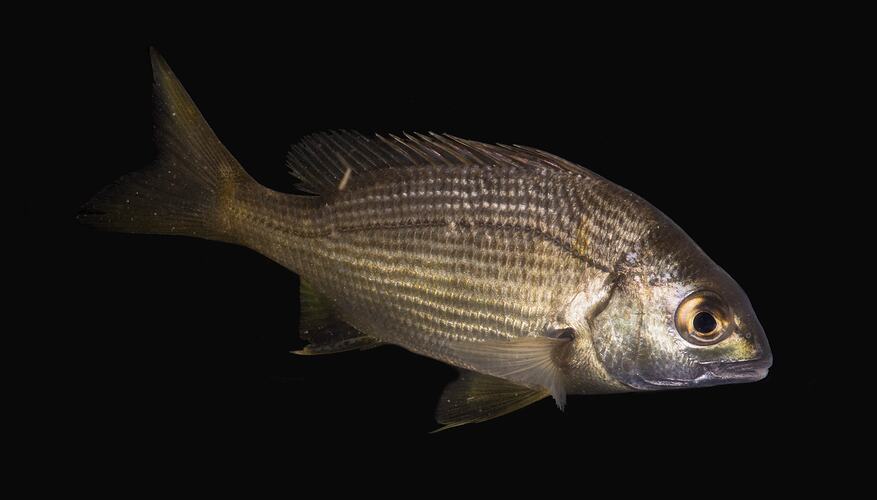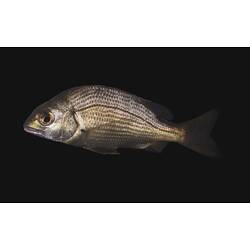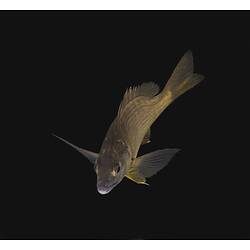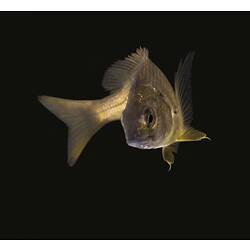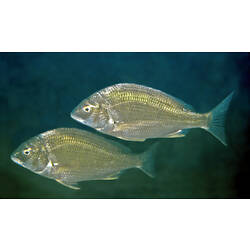General Description
Body deep and compressed (narrow from side to side). The dorsal fins have a long base. The tail is longer at the base than it is deep. The pectoral fins are long and the longest parts of these are the upper rays (bony supports within the fins). Dorsal and anal fin bases have a low scaly sheath. Jaws have peg-like teeth at the front and molars in the rear. Body is silvery olive-brown to bronzy, with brownish to dusky anal and pelvic fins. Mature fish often develop a bluish tinge on the snout. Up to 60 cm.
Biology
Black Bream complete their entire life cycle within estuaries and coastal lakes. Tolerant of salinity and temperature changes, they usually migrate upstream during drier times, and move back downstream after rain. Females spawn at the 'salt-wedge' where fresh and brackish waters meet in the lower parts of coastal rivers and streams. Black Bream feed on invertebrates and fishes, often using their peg-like teeth to prise molluscs and barnacles from rocks and snags. They also eat plants. This extremely popular and important food fish is targeted by recreational and commercial anglers for its firm white flesh.
Distribution
Southern Australia.
Habitat
In bays, inlets, estuaries, and in the lower reaches of rivers, in depths of 0-30 m.
More Information
-
Animal Type
-
Animal SubType
-
Brief Id
Deep-bodied olive-brown fish with dark fins.
-
Maximum Size
60 cm
-
Habitats
-
Diet
Omnivore
-
Diet Categories
Invertebrates, Fishes
-
Hazards
Sharp dorsal/anal fins can puncture skin, but are not venomous.
-
Endemicity
-
Commercial
Yes
-
Conservation Statuses
CITES: Not listed, FFG Threatened List: Not listed, EPBC Act 1999: Not listed, IUCN Red List: Least Concern
-
Depths
Shallow (1-30 m)
-
Water Column Locations
Midwater
-
Taxon Name
-
Scientific Author
(Munro, 1949)
-
Common Name
Black Bream
-
Kingdom
-
Phylum
-
Subphylum
-
Superclass
-
Class
-
Order
-
Family
-
Genus
-
Species Name
butcheri
